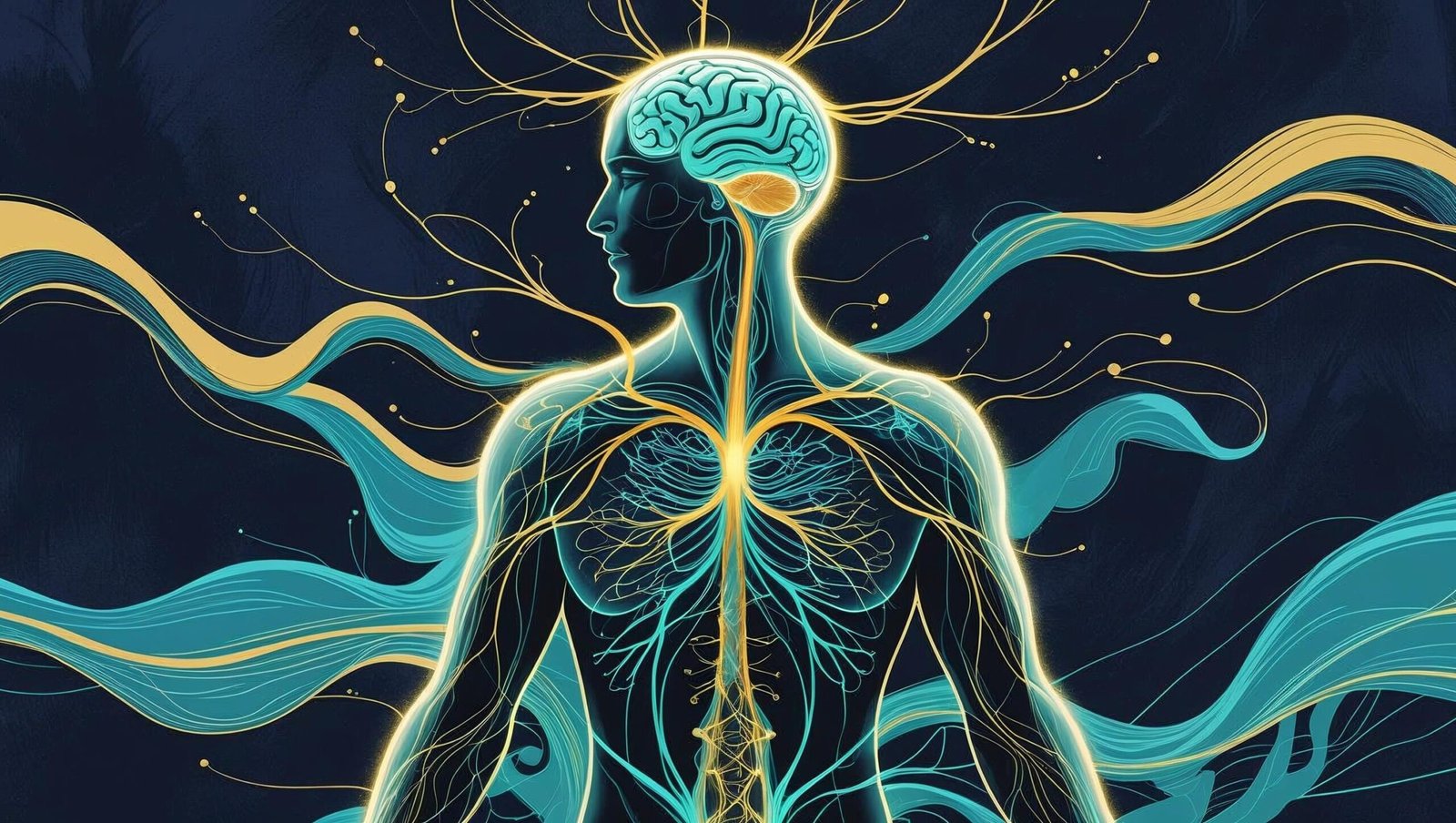Introduction
The Myth of Normal is not just a book; it is a mirror that reflects the hidden struggles of our modern lives. Written by Gabor Maté and his son Daniel Maté, this profound work dismantles the illusion that our society is “normal.” It shows us that what we consider ordinary—stress, disconnection, anxiety, and even chronic illness—is in fact the outcome of deep cultural dysfunction.
The book asks us to re-examine the assumptions we live by. Why do so many people suffer from autoimmune diseases, depression, or burnout? Why does modern culture reward productivity while neglecting compassion and community? And more importantly, what can we do to reclaim wholeness in a world that constantly fragments us?
In this blogpost, we will explore the key ideas from The Myth of Normal, analyze its relevance in today’s context, and see why this book has become a transformative guide for those searching for healing and meaning.

The Core Premise of The Myth of Normal
The central thesis of The Myth of Normal is straightforward yet deeply unsettling: what our society calls “normal” is actually harmful. We live in a culture where stress is glorified, emotional suppression is encouraged, and individual worth is measured by external success.
Gabor Maté explains that this “normal” produces chronic illness, mental health crises, and spiritual emptiness. He emphasizes that trauma—both individual and collective—is not the exception but the rule. This insight forms the foundation of the book and reshapes our understanding of human suffering.
1. The Hidden Cost of Stress
One of the most eye-opening aspects of The Myth of Normal is its exploration of stress. Our bodies are not designed to handle the relentless pressures of modern life. Emails, deadlines, financial insecurity, and social expectations create a constant state of tension.
Maté reveals how this chronic stress disrupts our immune system, affects hormonal balance, and leads to a host of illnesses. What we often normalize as “part of life” is actually slowly eroding our health.
2. Trauma Is Universal
Another shocking truth in The Myth of Normal is the universality of trauma. We often think trauma is reserved for victims of war, abuse, or disaster. However, Maté shows that trauma also comes in subtle forms—emotional neglect, societal pressure, or childhood disconnection.
This redefinition broadens our awareness. It means healing is not just for the visibly wounded but for all of us. Recognizing this is the first step toward compassion—for ourselves and others.
3. Illness as a Message
The Myth of Normal teaches us that illness is not merely a biological malfunction. Illness can also be a messenger, pointing toward unprocessed emotions or unresolved traumas. Autoimmune disorders, depression, and anxiety often carry hidden stories of pain that the body expresses when words fail.
Maté invites readers to listen to the language of the body. Healing requires not only medical treatment but also emotional honesty and self-awareness.
4. Disconnection in Modern Culture
At the heart of The Myth of Normal lies the critique of disconnection. Modern society separates us from our communities, our emotions, and even our inner selves. Technology has amplified this divide by creating virtual substitutes for authentic relationships.
This disconnection fuels loneliness, addiction, and mental health struggles. According to Maté, reconnecting—with nature, with each other, and with our inner truth—is essential to healing.

5. The Role of Compassion
Compassion is not optional—it is medicinal. The Myth of Normal stresses that compassion is both the cure and the prevention of suffering. But society often teaches the opposite. We are told to be “tough,” to hide our pain, and to compete rather than support.
The book calls for a radical return to compassion in healthcare, education, parenting, and personal relationships. This shift has the power to transform not only individuals but entire communities.
6. Parenting and Childhood Trauma
A particularly powerful section of The Myth of Normal deals with childhood. Children absorb stress and trauma from their environments, even if parents do not intend harm. Emotional neglect, lack of attunement, or constant pressure to achieve can leave lasting scars.
Maté encourages parents to prioritize emotional safety over performance. A child who feels seen, heard, and loved is far more resilient than one who merely meets external standards.
7. Addiction and the Search for Relief
In The Myth of Normal, addiction is reframed not as a moral failure but as a coping mechanism. People do not become addicted because they are weak. They turn to substances, work, or even digital distractions as an attempt to soothe inner pain.
This perspective eliminates stigma and replaces judgment with understanding. To heal addiction, society must address the pain beneath the behavior rather than punishing the symptom.
8. The Medical System’s Limitations
Another critical point raised in The Myth of Normal is the limitation of our medical system. Western medicine often treats the body as a machine, focusing on symptoms rather than root causes. While this approach can save lives, it rarely addresses the emotional and social dimensions of illness.
Maté argues for a holistic view of healthcare—one that integrates biology, psychology, and social connection. This shift could revolutionize how we treat chronic diseases and mental health issues.
9. Pathways to Healing
Ultimately, The Myth of Normal is not just about exposing problems. It also offers hope. Healing is possible when we reclaim authenticity, nurture relationships, and confront our traumas with courage.
Some practical steps include:
-
Practicing mindfulness and self-awareness
-
Creating supportive communities
-
Honoring emotions instead of suppressing them
-
Seeking therapy or holistic healing approaches
-
Cultivating compassion in daily interactions
These pathways remind us that transformation is achievable—not through denial, but through honesty and connection.

Exploring the Societal Roots of “Normal”
One of the most compelling aspects of The Myth of Normal is its deep examination of the societal structures that shape our understanding of what is “normal.” From early childhood, individuals are conditioned to conform to cultural expectations. Schools reward obedience and memorization rather than curiosity and creativity. Workplaces glorify productivity over emotional well-being. Even our social media feeds are designed to foster comparison and inadequacy.
This systemic conditioning contributes to a paradox: while many people achieve outward markers of success, they remain internally unfulfilled. Anxiety, depression, and chronic illness become the silent consequences of trying to fit into a framework that is inherently unhealthy. The book challenges this notion by asserting that these struggles are not individual failings—they are symptoms of a flawed societal model.
Maté emphasizes that acknowledging these structural pressures is not about placing blame but about understanding the context in which trauma and dysfunction thrive. This perspective is crucial because it shifts the responsibility from the individual to the collective, highlighting the importance of societal change alongside personal healing.
The Interconnection of Mind and Body
A central theme in The Myth of Normal is the profound connection between mental and physical health. Maté demonstrates that chronic stress and unresolved emotional trauma manifest in the body. Autoimmune diseases, cardiovascular problems, and even cancer are increasingly linked to long-term psychological stress.
The book argues that conventional medicine often misses this connection because the healthcare system is oriented toward treating symptoms rather than addressing underlying causes. For example, a patient suffering from chronic fatigue may receive medication to manage symptoms, yet the emotional root—perhaps childhood neglect or workplace burnout—remains unaddressed. Maté urges practitioners and patients alike to adopt a more holistic approach that acknowledges the inseparable link between mind and body.
Furthermore, he provides compelling case studies showing how individuals who engage in trauma-informed therapy, mindfulness practices, and social support often experience remarkable improvements in both physical and mental health. This reinforces the notion that true wellness cannot be achieved by focusing solely on one aspect of human experience—it requires an integrated approach.
Emotional Intelligence as a Tool for Healing
Another critical insight from The Myth of Normal is the importance of emotional intelligence. Maté argues that understanding and regulating one’s emotions is fundamental to overcoming the impacts of trauma. Emotional intelligence enables individuals to recognize their triggers, communicate their needs, and cultivate healthier relationships.
In modern society, however, emotional literacy is often neglected. Children are taught to suppress anger, hide sadness, or mask anxiety. Adults are encouraged to project competence and control, often at the expense of emotional authenticity. Over time, these habits accumulate, creating a reservoir of unresolved emotional tension that manifests as stress or illness.
Maté provides practical guidance for nurturing emotional intelligence. Journaling, reflective practices, and safe therapeutic environments are some methods he highlights. By embracing our emotions instead of denying them, we create a foundation for both mental clarity and physical resilience.
Reframing Success and Achievement
The Myth of Normal challenges conventional definitions of success. In a culture obsessed with material accomplishments and social recognition, genuine fulfillment is often overlooked. Maté asserts that societal norms equate achievement with worth, a notion that fosters chronic stress and emotional disconnection.
By redefining success through the lens of authenticity, connection, and emotional well-being, individuals can break free from the pressures of conformity. This reframing does not require rejecting ambition but rather realigning it with personal values rather than external validation. Maté encourages readers to ask fundamental questions: Am I pursuing this goal because it brings meaning and joy, or because society expects it of me? How does this choice impact my mental and physical health?
These questions, though simple, are powerful in redirecting attention from external pressures to inner fulfillment. They represent a paradigm shift in how we define a “normal” life—one that prioritizes holistic well-being over superficial markers of success.

Healing Through Connection
A recurring theme in The Myth of Normal is the power of human connection in healing trauma. Isolation, whether physical or emotional, amplifies suffering. Conversely, supportive relationships provide resilience and a sense of belonging. Maté emphasizes that community, empathy, and shared experiences are not luxuries—they are necessities for emotional and physical health.
In practical terms, this means fostering environments where people feel seen, heard, and valued. For example, workplaces that encourage collaboration rather than competition, schools that nurture curiosity rather than conformity, and families that prioritize emotional openness over rigid expectations can significantly reduce the burden of trauma.
Even on an individual level, practicing active listening, expressing vulnerability, and showing compassion can strengthen social bonds. These connections act as a buffer against the stressors of modern life, making individuals more resilient to both psychological and physiological challenges.
The Role of Mindfulness and Self-Awareness
Maté’s work places great emphasis on mindfulness as a tool for healing and self-discovery. Mindfulness allows individuals to observe their thoughts and emotions without judgment, creating space for awareness and reflection. This practice can reveal patterns of behavior and emotional responses shaped by early trauma or societal pressures.
Incorporating mindfulness into daily life can take many forms, such as meditation, mindful walking, or simple breathing exercises. The key is consistency and intentionality. By cultivating awareness, individuals can interrupt automatic reactions rooted in past trauma and respond more consciously to present circumstances.
Self-awareness, coupled with mindfulness, empowers individuals to recognize the ways in which cultural norms may have distorted their sense of self. This realization is a critical step toward reclaiming authenticity and fostering meaningful personal growth.
Addressing Collective Trauma
Beyond individual experiences, The Myth of Normal addresses the concept of collective trauma. Societies carry historical wounds—colonialism, systemic oppression, and cultural marginalization—that continue to affect generations. Maté highlights that understanding these collective dimensions is crucial for achieving societal healing.
Collective trauma often manifests in patterns such as social inequality, intergenerational poverty, and widespread mental health crises. Addressing these issues requires systemic interventions alongside personal healing practices. By recognizing the interconnectedness of personal and societal trauma, we can adopt a more compassionate and holistic approach to community well-being.
This broader perspective reinforces the urgency of challenging the “normal” expectations of society, which often perpetuate harm under the guise of tradition or progress.
Practical Steps for Integrating Lessons from the Book
The Myth of Normal offers a roadmap for practical application. Some steps include:
-
Creating Emotional Awareness: Begin by observing your reactions and identifying unresolved emotions.
-
Building Supportive Communities: Surround yourself with people who validate and encourage your authentic self.
-
Prioritizing Mental and Physical Health Equally: Understand that both dimensions are interconnected and require attention.
-
Challenging Cultural Norms: Question societal expectations that conflict with personal well-being.
-
Engaging in Trauma-Informed Therapy: Professional support can facilitate deep emotional processing and healing.
By integrating these practices, individuals can move from mere survival to thriving, ultimately redefining what “normal” means in their own lives.

Why The Myth of Normal Resonates Globally
The resonance of The Myth of Normal lies in its universality. Trauma, disconnection, and cultural stressors are not confined to any one country or demographic. The book speaks to a global audience because it touches on the human condition itself.
In an era of unprecedented connectivity yet pervasive loneliness, Maté’s insights provide clarity and hope. His work validates experiences that are often dismissed as trivial or individual failings. By framing these struggles as systemic and culturally induced, the book empowers readers to seek solutions that are both personal and collective.
The global appeal of The Myth of Normal underscores a fundamental truth: humanity thrives not under pressure and suppression but through understanding, empathy, and authentic connection.
Why The Myth of Normal Matters Today
We live in a time of unprecedented health crises—rising mental illness, increasing autoimmune disorders, and a culture of burnout. The Myth of Normal cuts through the noise and exposes the root causes behind these issues.
By challenging what we call “normal,” the book empowers us to choose a different path—one that prioritizes healing over hustle, compassion over competition, and authenticity over performance.
For readers of shubhanshuinsights.com, this book is not merely literature; it is a roadmap for a healthier and more meaningful life.
Frequently Asked Questions (FAQs)
Q1. What is the main message of The Myth of Normal?
The main message is that what society considers “normal”—chronic stress, disconnection, and emotional suppression—is actually harmful, and true healing requires compassion and reconnection.
Q2. Who should read The Myth of Normal?
Anyone struggling with stress, trauma, illness, or disconnection will benefit from this book. It is equally valuable for healthcare professionals, parents, and educators.
Q3. How does The Myth of Normal define trauma?
The book defines trauma not only as catastrophic events but also as everyday experiences of neglect, pressure, or emotional disconnection that shape our health and behavior.
Q4. Is The Myth of Normal only about illness?
No. While it discusses illness, the book is primarily about understanding the cultural roots of suffering and offering pathways toward wholeness and healing.
Q5. What practical advice does The Myth of Normal give?
It advises practicing mindfulness, fostering compassion, building supportive communities, and recognizing the emotional roots of illness and addiction.
Conclusion
The Myth of Normal is a wake-up call for our generation. It reminds us that what society has normalized is often toxic. But it also reassures us that healing is within reach if we dare to challenge false assumptions and embrace compassion.
This book is not only an exploration of trauma and illness but also a manifesto for human connection. It is a guide for anyone who seeks to live authentically in a world that pressures us to conform.
On shubhanshuinsights.com, I strongly recommend The Myth of Normal as a life-changing read. It will not only open your eyes to hidden truths but also inspire you to embark on a journey of self-healing and collective transformation.